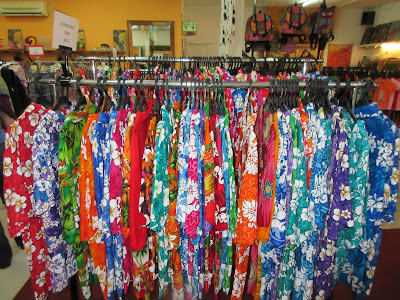Our next foray was to Singapore. Singapore has about 5.3 million people despite the fact that it's less than 300 square miles (or 72,000 hectacres, for my overseas readers).
We were lucky enough that the train system was amazing and we took it everywhere...and I saw Singaporeans love to sew, too! This lady was sewing by hand on a moving train!
When the urge to sew strikes, you seize it, even if it's hand-appliqueing on a fast-moving train!
Once we'd seen some other sights, we visited a couple textile markets; Mustafa Centre and the People's Park Market.
Let's talk about the People's Park Market - I've found when people say "Chinatown" in Singapore that they probably mean the People's Park Market. I realized this the hard way. We literally walked the streets of Chinatown in Singapore looking for it.
Now, this was not without benefits, as we saw the Buddha's Tooth Relic Temple and Museum and walked the streets lined with markets, stalls, and food galore.
But unfortunately the lovely store I heard has Liberty of London fabrics that I've been dying to see in person was closed, as it was a Sunday.
This was my first view of the textile floor - using the word fabric gets you sent to the clothing section.
Again, since it was Sunday a lot appeared to be closed, but there was still plenty open!
You have to be a bit careful here, because if you live somewhere that already has a great fabric selection, Singapore is kind of pricey already.
So if you pick up a pretty bolt of Cotton & Steel you may find yourself looking at the equivalent of $20 USD/metre. No thanks!
However, stumble into the right store (like the one pictured just below) and you'll find not only a cute little quilt shop, but one with great prices too!
This one didn't have a name that I could see posted, but it's in the very back corner right before you get to the restrooms (take your own toilet paper!) and the stairs. If you enter from the long side of the building it's back left.
It's also very obvious from outside as well because you can see white shelving and they have fabrics on the outside but there's something...quilt-store-esqe about this cute little booth that I rarely see in this part of the world.
No material on the floor, everything beautifully organized, and kind, smiling staff.
I picked up 5 yards of peach with little white plus signs (this one vendor was yards, the rest are metres) for only $30USD!
That made me happy enough to run to an ATM for more Singaporean dollars.
This next store was just down the way on the same side and had a lovely lady who greeted me more cheerfully than most of the shops in the market.
She was kind enough to permit me to take a few photos, and when I mentioned I quilt she immediately said "so this market is like candy to you!"
Her store was also beautifully organized, and I just had to have a few prints from here too!
My other fabric stop was at Mustafa Centre, which you have to see to believe. It's five stories tall, located in Singapore's Little India, and a combination of Walmart and Costco on steroids!
It crosses a road and takes up several city blocks. Everything in that store has a massive wing and things are available at all price points.
Here's a first shot of the fabric section...!!! Unlike the People's Park Market, this place is very slightly less expensive for fabric, depending on what you're looking for.
Here's another small shot of the fabric section - it was at least 4-5 times the size of this photo.
And some pretty shots of the bolts...
Here was my haul for the day...
I've already got plans to use those awesome grey dots in a quilt pattern I'm designing!
Here are some other highlights of the trip...the Singapore Art Science Museum had an M.C. Escher exhibit. I always love to see other artists' works in any mediums, and it was a true honor to see the work of such a famous one in person.
Above is his famous "Drawing Hands," 1948, Lithograph. It's hard to tell in the photos, but this is a very three dimensional drawing. The hands appear to come off the page!
And here is his "Relativity," 1943, also via Lithograph.
Below are a few photos of quilts I forgot to show you in my posts on Kuala Lumpur.
My husband and I enjoy experiencing other cultures, to include learning about different religions, and when we visited the Islamic Arts Museum these hung in the gift shop...
All of these pretty pieces were sewn by hand and reflect designs traditional to many places around the world that practice the Islam religion.
My favorite part was all the detail and looking closely at the needle-turned applique pillow. It reminds me that the sewing world is able to transcend any boundaries.



































































